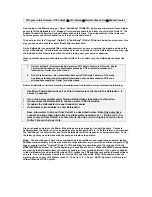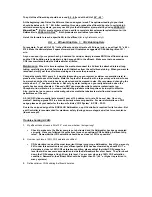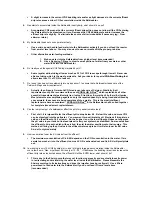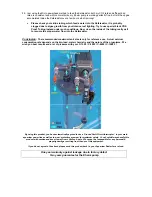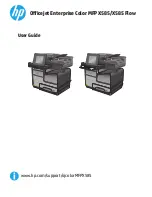
KORALLIN
Kalkreaktor
Check List
: 1x Body (
incl. lid, tubing, white pad, sieve, screws, integrated O-ring, etc.
)
1x Eheim pump
1x Metallic Check Valve w/ black clip
1x Airline Tubing (
ID/OD = 4/6 mm
)
4x Elbows for airline tubing
Please refer to Page 5 for easy-to-follow illustration
Introduction
: Thank you for purchasing the most advanced, efficient and reliable Kalkreaktor (Calcium
Reactor) from Germany. The new series now consists of models C-1502, C-3002, C-4002 & C-10002.
KORALLIN Kalkreaktor is designed and engineered to perform consistently, forgivingly, and intelligently
by actually 'communicating' with the practitioner. Its exclusive ‘Non-dissolvable & Excessive CO2 Safety
Feature’ allows excessive CO2 to accumulate inside its reaction chamber and break the water circuit such
that no CO2 can enter into your sump, or settle on top of it. Or if you choose to have a continuously
running Kalkreaktor with absolutely no interruption, you can achieve this with its dual-outlet design.
Aspirating-venturi technology means that it utilizes CO2 and dissolves Calcium Carbonate (CaCO3) media
in the most efficient way, resulting in substantial savings & convenience. Its extremely sturdy
construction w/ detachable attachments make it the most durable piece of aquaristic equipment out of all
in your system.
Operation
: Before starting please thoroughly rinse the internal housing of the Kalkreaktor & its
attachments for 20 minutes with freshwater (the purpose is to remove any residual particle and oil left
from the factory).
Unscrew the 6 screws from their washers & nuts. Lift up the lid assembly (ie: Lid w/ attached long
internal tubing, pad & sieve)
half-way
. Pour pre-rinsed CaCO3 media into the unit (
C-1502 takes 3kg while
C-3002 takes 6.5kg
). Make sure that the media stays on top of the pad & sieve. Leave about 7 cm of free
space at the top after the unit is properly filled and with its lid assembly lowered & closed securely.
Tighten the lid onto the body. You may need to apply some pressure onto the lid after securing each
screw. Use hex-key, screwdriver and wrench if necessary.
Note the directional arrow engraved onto the Metallic Check Valve. CO2 should enter from its bottom and
exit at the top. Snap it onto the Bubble Counter using the black clip. Follow the illustration on page 5 and
unscrew and remove the small white nylon screw.
Position the Eheim pump such that its output can be connected to the "
Ausgang
" (outlet) tubing and its
input to the "
Eingang
" (inlet). Secure the soft tubing from the 2 attachments to the Eheim pump. Now
tighten the 2 Tru-union Couplings onto the lid. Make sure that all tubing is free from debris. Refer to the
illustration for the proper connections. Resit the white nylon screw to secure the Eheim pump base onto
the lid.
It is okay if some media drop beyond the sieve and white pad. Make sure that about 7 cm of free space is
present on top of the media for a clear observation of excessive CO2 accumulation as well as to prevent
the pump inlet from being clogged by the media.


